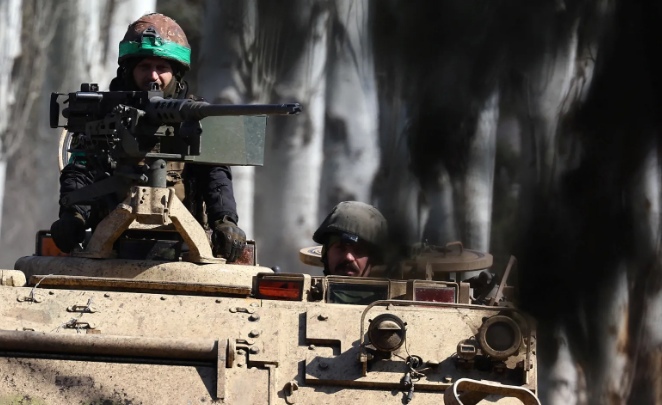Ukrainian President Volodymyr Zelensky visited the United Nations and the White House this week, seeking support for his country in a war that has no end in sight. Although the politics of the conflict are getting tougher in Washington, the U.S. will have to change strategy to help Ukraine survive and win the protracted war, American Enterprise Institute reports.
The Ukrainian authorities are hoping for a catastrophic collapse of the Russian resistance. Only then will Ukraine have the slightest chance to liberate its territory this year. The war may not end next year either, which could be influenced by the US elections in 2024. The return of Donald Trump to the US presidency could be the beginning of the collapse of Western unity. The war may continue until 2025 or even longer, creating new problems in the new phase of the war.
The first phase of the U.S. strategy in 2022 meant providing enough aid to Ukraine to ensure that it would not lose, while at the same time incurring horrendous costs to the invaders. The success of these efforts led to a second phase: preparing Ukraine for a counteroffensive to retake territory and possibly make peace on favourable terms. However, this phase proved more frustrating due to virtually no success on the battlefields.
Even now, peace talks could leave Ukraine defenceless and dismembered. Therefore, unless the U.S. opts for disengagement, which is tantamount to Ukraine’s defeat, it needs to start looking for solutions to the problems that a prolonged war would bring.
The first is related to an assessment and perhaps some kind of transformation of military strategy. Ukraine’s current offensive operation has not achieved the expected successes because the country has imitated Western tactics without having the advantages that Western militaries are used to, such as air superiority, American Enterprise Institute writes.
Ukraine already needs to be prepared for operations in 2024 and beyond. However, should the West prepare Ukraine for a similar offensive next year, or perhaps it should adopt a more familiar, albeit less ambitious, strategy of attrition. Such a strategy involves localised offensive operations combined with a build-up of long-range strikes aimed at disrupting Russia’s supply lines and gradually undermining its military position.
Second, a longer war would require greater escalation. In the initial phase, the U.S. carefully probed the edges of what was permissible. Recently, the U.S. has dared to provide sophisticated assets such as Abrams tanks and F-16 fighter jets.
If the new military strategy involves coercion rather than directly dislodging Russian forces, Ukraine will need longer-range ATACMS missiles and other systems to significantly increase the pain of striking Russian forces.
Third, the U.S. needs to increase economic pressure. Sanctions have hurt but not broken the Russian economy, which continues to produce weapons. The Treasury and State Department are already cracking down on sanctions evasion, with additional fines announced last week against 150 individuals and entities. The next step may be to lower the price cap set by the G7 on Russian oil sales to affect Russia’s economy without destroying Europe’s economy.
However, a protracted war means not only the destruction of Ukraine, but also a constant waste of US resources. Therefore, it became necessary to increase spending on the US defence-industrial base – from securing supply chains of rare-earth metals to building stocks of missiles and ammunition that Washington will need in its own conflict, possibly over Taiwan, according to American Enterprise Institute reports.
Fourth, Washington must prevent a long war from becoming a source of weakness and distraction. The record to date is encouraging: Since February 2022, the US has dialed up production of artillery shells and other weapons, while expanding and strengthening its global alliance network.
However, a protracted war means not only the destruction of Ukraine, but also a constant waste of US resources. Therefore, it became necessary to increase spending on the US defence-industrial base – from securing supply chains of rare-earth metals to building stocks of missiles and ammunition that Washington will need in its own conflict, possibly over Taiwan, according to American Enterprise Institute reports.
It is easy in words, but difficult in deeds, as the politics of war in the United States become increasingly bitter. Congress continues to provide substantial support for Ukraine. However, because House Speaker Kevin McCarthy is hostage to the most stubborn members of his Republican coalition, he is struggling to keep the US government open, let alone secure another major tranche of funding for Ukraine.
Potential candidates in the Republican primaries – Trump, Florida Governor Ron DeSantis and biotech entrepreneur Vivek Ramaswamy – would not welcome military aid to Ukraine. Their opposition could change views among Republican voters over time.
